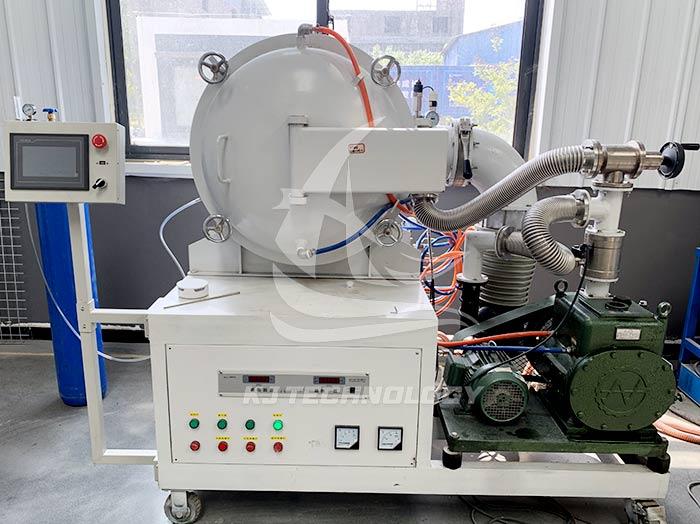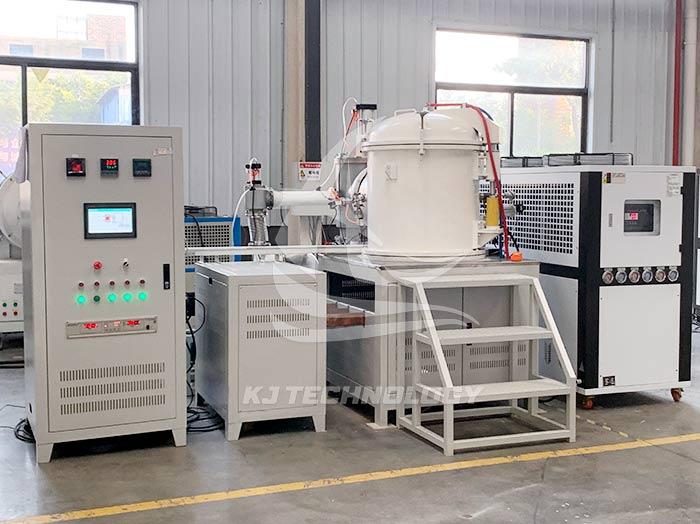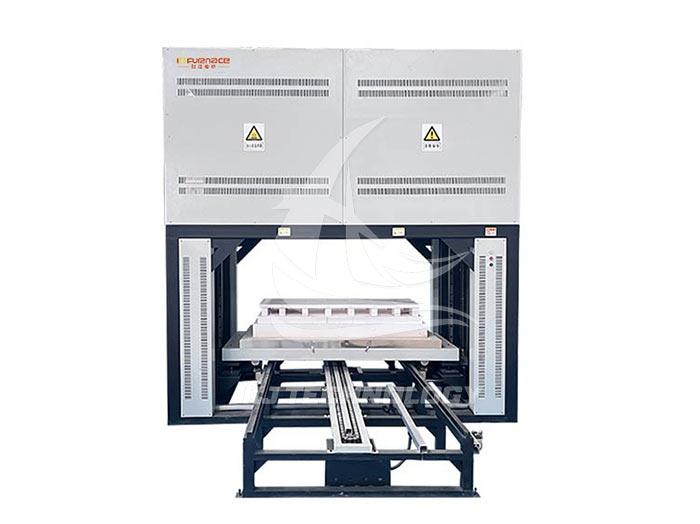Precautions for operating gas quenching furnace
 10-27-2025 Author: KJ technology
10-27-2025 Author: KJ technology
The operation of gas quenching furnaces must strictly follow safety regulations and process requirements to ensure stable operation of equipment, compliance with workpiece quality standards, and personnel safety. The following are key precautions during the operation process, covering equipment inspection, process parameter control, safety protection, and emergency response:
1. Preparation before operation
Comprehensive inspection of equipment
Vacuum system: Check the oil level, sealing, and pipeline connections of the vacuum pump to ensure no leaks; Test whether the vacuum degree can meet the process requirements (such as<10 ⁻ ³ Pa).
Gas system: Confirm that the high-pressure gas (nitrogen, helium) reserves are sufficient and the pressure is stable; Check if the air circuit valves, filters, and nozzles are blocked or damaged.
Heating system: Check whether the heating elements (such as resistance wires and induction coils) are intact, and calibrate the temperature sensors (thermocouples) accurately to ensure temperature control accuracy.
Cooling system: Check the water level, water flow, and water temperature of the chiller to prevent overheating of the equipment due to insufficient cooling.
Mechanical components: Check if the furnace door sealing strip, workpiece rack, and transmission device are flexible to avoid jamming or detachment.
Preparation of workpieces and fixtures
Cleaning the workpiece: Remove oil stains, rust, and impurities from the surface of the workpiece to prevent contamination of the furnace environment.
Fixture selection: Select appropriate fixtures based on the shape, size, and weight of the workpiece to ensure firm clamping and not affect gas flow.
Pre treatment: Preheat or low-temperature temper easily deformed workpieces to reduce quenching stress.
Confirmation of process parameters
Set the quenching temperature, holding time, gas pressure, and cooling rate based on the material type (such as carbon steel, alloy steel, stainless steel) and performance requirements.
Refer to the process curve (such as heating rate and isothermal time) for parameter presetting to avoid workpiece scrap caused by parameter errors.
2. Key control points during operation
Vacuum pumping and inflation operations
Vacuum pumping sequence: First, turn on the mechanical pump to pump to a rough vacuum (such as 10 ⁻¹ Pa), then switch to the diffusion pump to pump to a high vacuum (such as 10 ⁻³ Pa) to prevent oil vapor from flowing back.
Inflation timing: After the temperature inside the furnace drops to a safe range (such as<200 ℃), high-pressure gas should be injected to avoid sudden pressure changes caused by gas expansion at high temperatures.
Gas purity: The gas filled should be of high purity (such as 99.999% nitrogen) to prevent impurities from affecting cooling efficiency or workpiece surface quality.
Temperature and pressure monitoring
Temperature control: Real time monitoring of the temperature inside the furnace to avoid overheating (such as exceeding the material austenitizing temperature+50 ℃) causing grain coarsening or overheating.
Pressure regulation: Adjust the gas pressure according to the size of the workpiece, using low-pressure slow cooling for thin-walled parts and high-pressure fast cooling for thick walled parts.
Uniformity check: Confirm the temperature uniformity inside the furnace (within ± 10 ℃) through multi-point temperature measurement to prevent local overheating or underheating.
Control of Gas Quenching Process
Nozzle alignment: Ensure that the gas nozzle is aligned with key parts of the workpiece (such as gear teeth and tool edges) to improve cooling uniformity.
Flow regulation: Adjust the gas flow rate according to the material of the workpiece to avoid excessive flow causing vibration or deformation of the workpiece.
Cooling rate monitoring: Record the cooling curve using an infrared thermometer or thermocouple to ensure complete martensitic transformation.
3. Safety protection measures
Personal protective equipment
Operators are required to wear heat-resistant gloves, protective face shields, and anti smashing shoes to prevent burns from high temperatures or injuries from flying objects.
When vacuuming or inflating, stay away from the furnace door and gas path interface to avoid high-pressure gas spraying out and injuring people.
Equipment safety interlock
Ensure that heating cannot be started when the furnace door is not closed, and do not inflate when the vacuum degree is insufficient to prevent accidents caused by misoperation.
Regularly test safety valves, pressure gauges, and alarm devices to ensure their sensitivity and reliability.
Fire and explosion prevention
Flammable materials are strictly prohibited from being placed inside the furnace, and fire extinguishers and sandboxes should be provided around.
Explosion proof devices must be installed for gases containing hydrogen, and the hydrogen concentration must be strictly controlled.
4. Post operation processing
Workpiece retrieval and inspection
After the temperature inside the furnace drops below 50 ℃, wear protective equipment to remove the workpiece and avoid high-temperature burns.
Check the surface quality of the workpiece (such as oxidation color, cracks) and hardness (such as Rockwell hardness tester testing), record the data and compare it with the process requirements.
Equipment maintenance and upkeep
Cleaning the furnace: Wipe the inner wall and nozzle of the furnace with a dust-free cloth to remove any residue.
Replace vulnerable parts: Regularly replace vacuum pump oil, sealing strips, and filters to extend equipment life.
Record archiving: Archive operational parameters, workpiece inspection results, and equipment failure records to provide a basis for subsequent process optimization.
Emergency Response Plan
Vacuum leakage: Immediately turn off the heating power, start the backup vacuum pump, and evacuate personnel.
Gas leakage: Close the gas source valve, open the ventilation system, and use a detector to locate the leakage point.
Fire: Cut off the power supply, use carbon dioxide fire extinguishers to extinguish the fire, and strictly prohibit using water to extinguish the fire.
5. Typical operational taboos
Prohibited operation under pressure: Do not open the furnace door until the pressure inside the furnace has been released to atmospheric pressure.
Prohibit over temperature operation: It is strictly prohibited to set the heating temperature beyond the allowable range of the equipment or material.
Do not mix gases: Different materials of workpieces should use corresponding gases (such as argon for stainless steel and nitrogen for high-speed steel) to avoid reactions.
Untrained operations are prohibited: Operators must undergo professional training and pass the assessment before they can take up their posts.








